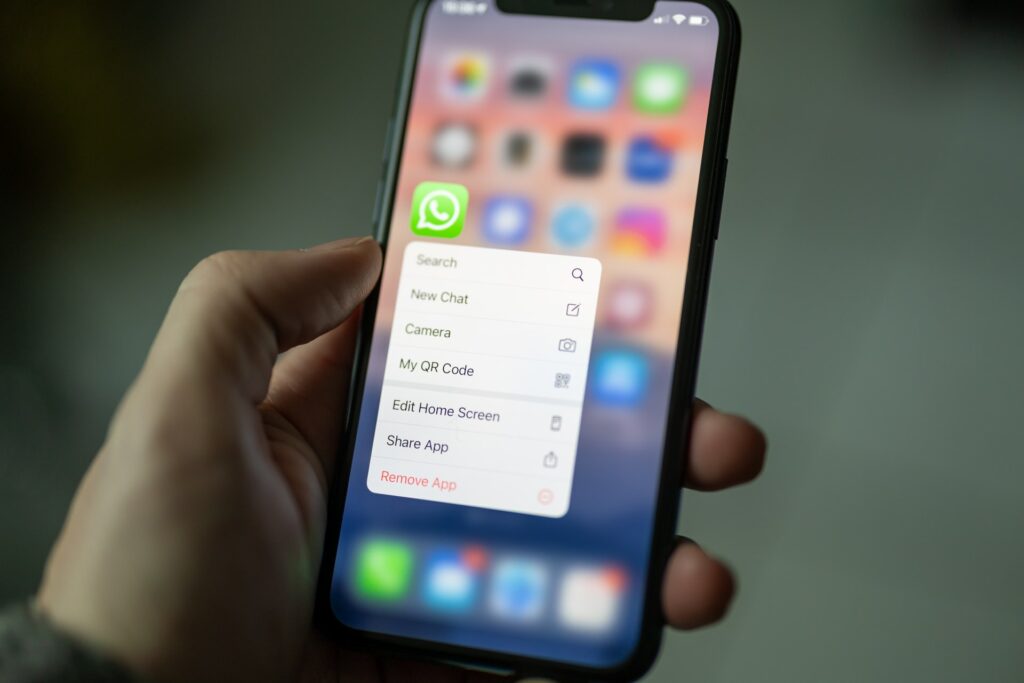Native, web, and hybrid apps—each of today’s mobile applications colloquially fall into market-aligned distinctions like educational, social, lifestyle, and other similar classifications. But beyond such distinctions, what exactly are mobile applications, and how do they differ in their development and use?
Mobile applications are programs made to perform on mobile devices such as smartphones, smartwatches, and tablets. Generally, mobile apps are designed to optimize user access to services and products through simple actions such as the touch of a screen, a click of a mouse, or a keyboard tap.
When it comes to mobile app types, software developers have a choice between three options: Native, web, and hybrid. The development of these applications may occur on a variety of platforms, some of the most popular options being Microsoft’s Xamarin, Meta’s React Native, and Mendix.
Functionality varies by app type, but most mobile applications are designed to have a client that runs on a mobile device, which subsequently interacts with a back-end service that accesses data and performs all necessary heavy computational lifting.
While the end goal for all app types is the same, each has its peculiarities. So, what exactly are native, web, and hybrid apps and what’s the best option for you?

Native apps
Just as the name suggests, native apps function on only one platform and/or device type. In other words, programmers create these apps specifically for certain operating systems and they cannot be used beyond the one in which they were developed. Users install native apps directly on to their devices and such apps can therefore provide a very rich interactive experience.
Typically, logic for these apps is implemented as micro-services, hosted in some container framework (like Docker or Kubernetes) running in the cloud (like Microsoft Azure or Amazon Web Services). These apps are designed in a manner that utilizes direct use of a device’s hardware, like a device’s camera and Bluetooth capabilities.
Because native app development is dependent on platform-specific qualities, the development process for each platform is in consequence also different. For example, development on iOS employs the utilization of Objective-C or Swift whereas Android app development entails the use of Python, PhP, Java, C++, or Kotlin.
Pros:
- Direct connection to device hardware optimizes access to device features and ensures stability during app use
- Increased efficiency is a given as the app only utilizes features specific to a platform and a delineated set of devices
- The use of platform-specific qualities can mean better speed and reliability
- May enhance the user’s experience as a whole: Due to direct installation, native apps can utilize features like push notifications and may work offline, for example
Cons:
- The platform-specific functions of native apps also make for a need to redevelop the app every time you wish to make it available on a different platform. An iOS-native app cannot perform on an Android platform. This means Android- and iOS-native apps must be built from different code bases.
- Updates take a long time because large amounts of code must be modified
- The time and money placed on the redevelopment and upkeep of a native app build up, resulting in inefficiencies and additional costs
- Requires more device storage and therefore takes up more memory than other web and hybrid apps

Web apps
Neither downloaded nor installed but instead entirely network-based, web applications function out of your web browser and adjust their UIs accordingly. Comparatively speaking, these apps function at a surface level where, unlike native apps, they make little to no use of user device hardware.
Web app development requires two sets of code: Server-side code and client-side code. Server-side code is considered the back-end because it’s where data is generally stored. In turn, server-side code allows for processing to occur on a web-based server. The client-side is considered the front-end, as it directly refers to the web browser itself and consequently processes user input directly on the user’s device.
Commonly used server-side code languages include Java, JavaScript, and Python. For developing the client side, any combination of CSS, HTML, and/or JavaScript may be used as well.
Pros:
- With web apps, there’s no need to adhere to platform-specific functions—everything is web-based
- Increased accessibility for users since anyone with an internet connection can use it—users do not need to possess a specific device
- As this type of app does not require installation, it needs little device memory
- No need for permission from app stores to launch, as users may access them via their browsers rather than through a walled app market
- Requires comparatively little code, meaning that updating can theoretically occur faster (and so can development in general)
Cons:
- Performance is directly linked to the user’s internet connection
- User browser preference may impact functionality, as some browsers may provide more or less functionality than others
- There is no guaranteed user experience because many factors (like bandwidth, connection, or device type) can potentially influence the quality a user receives
- Less secure than native apps, meaning that privacy can be compromised
- All things considered, slower than native apps

Hybrid apps
Hybrid apps consist of a combination of native app-like qualities and web-based features. Users can install hybrid apps and they may look just like a native app, but they ultimately function as a web app. In short, hybrid apps are essentially web apps wrapped in a native shell.
A major difference between hybrid and native apps is that hybrid apps can function across multiple platforms. They also notably differ from web-based apps in that they are not restricted to specific browsers. As a result, hybrid apps provide developers with a substantially greater reach than native and web apps.
Apps of this type tend to utilize a native-like approach for the back-end coding process and progress to a web-like approach by utilizing non-specific coding languages like JavaScript or HTML for the front-end of things.
Pros:
- Hybrid apps are easier to develop since they lack the complexities of the other two options
- Overall, comparatively low maintenance as there is minimal code necessary to create them
- More efficient update process, potentially saving developers time and money
- Load and function quickly, with direct browser access if installed
- Can simplify the development process as a whole
Cons:
- The efficiency detracts from the overall performance, and this app type is not ideal for implementing more intricate functions
- Speed is notably worse than that of a native apps
- Reduced reliability due to some level of dependency on internet access
- Because the app appears on multiple platforms, formatting issues have a high likelihood to occur
Which option is best for me?
We’ve reviewed the major differences between these three apps types. Now you may be wondering what is best for you and your team.
As you can see, each app type presents advantages and drawbacks:
- If you want to make the most of an operating system’s capabilities, native is the obvious choice. Yet it can be resource-intensive to develop.
- If your focus is on efficiency and time to value, web apps present a solid option. However, they require a constant internet connection to function.
- If your goal is to maximize your reach, then hybrid apps provide an affordable alternative to the other two options. On the downside, they present challenges around performance and form factors.
There’s a lot of give and take here.
But ultimately, the choice that is best for you and your team will depend on what factors you and your team evaluate and prioritize. There’s no right or wrong type of mobile app to develop, the best will be dependent upon a team’s mission objectives, end customer preferences, and the factors they value the most.
Whatever your app type preference, Sofy’s no-code mobile app testing solutions are here for you and your team. With Sofy, you can not only achieve the much-desired leftward shift early into the development cycle, but also save your team time and money by joining the No-Code Revolution.









